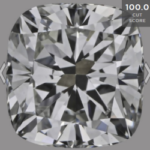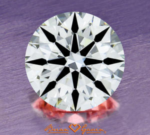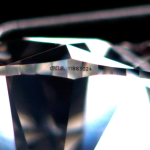How To Buy Sapphires
AA, AAA, and AAAA Quality
Although diamonds are the classic option for many engagement rings, they aren’t the only precious stone that women prefer. Thanks to Kate Middleton, sapphire engagement rings are trending as a very popular alternative due to their beauty, rarity, and durability. Natural sapphires are graded and valued according to their cut, color, clarity and carat weight as well as country of origin. If you are looking to purchase a sapphire engagement ring, then you’ll want to familiarize yourself with some common knowledge on what to look for in a high quality natural sapphire.
Sapphire Color:
Unlike diamonds, there is no standard grading system for colored gem stones and thus grading systems are to be used as a guide and not an absolute authority on a gem’s ultimate value. The most important characteristic when determining a sapphire’s price and rarity is its color grade. The best color for a natural blue sapphire is a deep intense royal velvety blue. These are considered AAAA quality and are the most valuable and rare. Second in line would be a medium rich blue color graded at AAA quality. Blue sapphires with a slightly gray undertone would be considered a AA quality and finally a very dark and opaque blue sapphire is considered an A quality grade.
Measuring color in a sapphire includes the consideration of its tone, hue and saturation. The tone refers to the deepness of the blue color and is used to describe whether it is dark, medium or light. The best sapphires have a medium to medium-dark blue tone. Hue refers to the presence of other colors. Blue sapphires are measured based on the purity of their primary hue and often have purple, violet and green as secondary hues. Fine quality blue sapphires have no more than 15% violet and/or purple hues that contribute to its overall color. Any green hue is not considered to be fine quality. Saturation refers to how well a sapphire has been saturated with blue colors as opposed to brown or gray colors.

Blue Sapphires are graded on their color, clarity, cut and carat weight. AAA quality sapphires represent the top 10% of all Sapphires available in the world, with AAAA representing just 1%. (photo credit: The Natural Sapphire Company)
Sapphire Clarity:
The clarity of a natural sapphire also has an impact on its rarity and price. Clarity grade definitions are slightly different for diamonds and gemstones because some gemstones like sapphires, are more included than others. Thus there are three types of clarity grades for gemstones: Type 1 stones are typically eye-clean with no visible inclusions to the naked eye, Type 2 stones typically show some eye-visible inclusions but do not take away from the overall beauty of the stone, and Type 3 stones are almost always included and show eye-visible inclusions. Most sapphires are somewhat included. Even the most expensive sapphires can be slightly included. However, generally speaking, sapphires with less inclusions are still considered rare and thus command a higher price.
Sapphire Cut:
Cut always refers to how well a gemstone’s facets are proportioned and polished. Just like diamonds, a shallow or deep cut sapphire which is poorly cut will always have light leakage. The best cut gems will show optimum brilliance and look to have more “life” or “personality”. These sapphires are more rare and command a higher price than inferior cut gems.
Sapphire Carat Weight:
Sapphires are weighed the same as diamonds and command a higher price for the larger and more rare stones.
Natural Sapphire Origin
In addition to a natural sapphires color, clarity, cut and carat weight, another important consideration is where the diamond was originally mined. Most people don’t realize that diamonds are actually quite plentiful and can be mined on all 7 continents and in most countries. However, colored gemstones like sapphires, rubies and emeralds are found only in a handful of countries around the world.
Some sapphire sources have developed greater prestige than others so it isn’t a surprise that origin has been known to be highly influential when it comes to price. However, it is important to remember that quality is determined by a sapphire’s appearance and not the country of origin.
Kashmir Sapphires:
Sapphires were first discovered in Kashmir in 1880 and were heavily mined there from 1882-1887. By 1887, the mines were depleted. These sapphires are not only the rarest but are also considered the world’s most beautiful due to their color and purity. It is generally accepted that Kashmir sapphires have set the standard by which all other blue sapphires are evaluated.
These sapphires have medium to medium-dark tones of violet-blue to blue and are known for their violet-blue color and “velvety” or “sleepy” transparency (caused by fine rutile needle inclusions called “silk”).Unfortunately, the vast majority of Kashmir sapphires found today are in antique or vintage jewelry.
Burmese Sapphires:
Present day Myanmar was once known as Burma and is a well known source of the world’s top quality rubies as well as fine sapphires. Sapphires found in this region can be very large and come in various colors including: colorless, purple, violet, blue, green and pink.
Burmese sapphires are different from Kashmir sapphires in their tone and color distribution. Kashmir sapphires are medium to medium-dark and Burmese sapphires can range from medium to darker tones. Hues in Burmese sapphires are similar to Kashmir and Sri Lankan sapphires but are more evenly distributed and are often called “electric blue” in color.

1.78ct Royal Blue Natural unheated Ceylon Sapphire with excellent make and deep blue color face up. Available from Leibish.com for $4,760.00 (click for more info)
Sri Lankan Sapphires (Ceylon Sapphires):
Sri Lanka (known as Ceylon prior to 1972) is the oldest source of fine sapphires in the world where mining can be traced as far back to at least 500 BC. These sapphires are still called Ceylon Sapphires and are highly prized by collectors and jewelry lovers for their gorgeous luminosity and brilliance. Most of the fine quality sapphires available today come from Sri Lanka, which produce a wide range of beautiful blues with rich saturated hues. Other colors from Sri Lanka include vibrant pinks and violets (more rare than blue), and the pinkish orange sapphire called “Padparadscha” that is only found in Sri Lanka. The deep blue color of Ceylon sapphires are considered among the finest sapphires available and are known for their transparent surface that glitters. These sapphires are ultimately known for their higher clarity, rutile silk needles, and fingerprint inclusions. Sri Lanka produces an estimated 60% blue, 35% yellow and orange, and 15% pink or purple colored sapphires.
Cambodian and Australian Sapphires:
Sapphires from Cambodia and Australian mines are typically violet-blue to greenish-blue hue with heavy gray masking. Tones range from extremely dark to medium as well as showing black extinction areas.
Heat Treatment As Standard Practice
Sapphires that are naturally found closer to thermal venting in the earth are naturally colourful and more clear. Because not all sapphires are located in these natural areas, it is accepted general practice to heat-treat these sapphires to improve their natural color and clarity. This is a permanent process and doesn’t detract from the gemstone at all, in fact 99% of all sapphires that are used for fine jewelry are heat-treated.

1.19ct Natural Ruby (red Sapphire) with no heat treatment and magnificent color face up. Available at Leibish.com for $4,080.00
Sapphires Are A Great Alternative To Diamonds
Sapphires are graded 9 out of 10 on the Mohs’ hardness scale and are therefore the 2nd hardest gemstone second only to diamonds. They are extremely durable as well as scratch resistant and come in many different shades including: red (otherwise known as rubies), orange, yellow, purple, pink and green. Any non-blue sapphire is considered a “fancy” color.
If you are in the market to buy a sapphire engagement ring then you’ll want to invest in a high quality AA or AAA sapphire with a natural origin of Ceylon, Thailand, or Australia (AAAA quality sapphires from Kashmir and Burma are exceedingly rare and difficult to find). ODBA recommends Leibish.com for loose sapphires of all colors including already set engagement rings.
Hey.You Want Ideal Cut Diamonds?
You've got it.
Join ODBA's Diamond Deal Friday and get handpicked diamonds every week from me to you.
No consultation required. Subscribe now!
ODBA Recommends
You May Also Like








